 Your new post is loading...
 Your new post is loading...
I first drew a version of this cartoon years ago sitting behind the focus group one-way mirror while working at General Mills. We held a lot of focus groups, many of them in a Minneapolis suburb called Eden Prairie. We used to jokingly refer to those focus group respondents as “The Oracles of Eden Prairie.” We seemingly brought just about every marketing idea to the Oracles of Eden Prairie for inspiration and direction. But what frequently happened is that we would listen for statements that confirmed what we already believed and then disregard the rest. I learned that focus groups can be a great tool for confirmation bias. The Wall Street Journal recently wrote about how focus groups are gradually being displaced by technology-driven tools like social listening. As Seventh Generation’s Maureen Wolpert put it: “It’s very expensive to find that progressive-leaning, millennial new mom who has the time to attend a focus group. This is a way to listen in on the conversation moms are having and to really see their problems.”...
A new European study on human behaviour suggests that people can be divided into one of four main personality types — with 'Envious' being the most common.
The new research, carried out by a team of researchers from Universidad Carlos III de Madrid and the universities of Barcelona, Rovira i Virgili and Zaragoza, Spain, presented 541 volunteers with hundreds of social dilemmas and asked them to report on what they would do in each situation.
Participants had to make decisions based on individual or group interests, which would lead to either collaboration or conflict with others.
The decisions also had different consequences depending on what another participant involved decided to do, with Anxo Sánchez, one of the authors of the study explaining, "Those involved are asked to participate in pairs, these pairs change, not only in each round, but also each time the game changes. So, the best option could be to cooperate or, on the other hand, to oppose or betray ..... In this way, we can obtain information about what people do in very different social situations."
The researchers then created a computer algorithm to analyze the responses and classify participants into personality groups based on their behaviour.
The results showed that the majority of the participants — 90 per cent — could be divided into just four basic personality types, Envious, Trusting, Optimistic, and Pessimistic.
So why is this? Why do some societies not encourage casual smiling? I got my answer, or at least part of one, when I stumbled across a new paper by Kuba Krys, a psychologist at the Polish Academy of Sciences. In some countries, smiling might not be a sign of warmth or even respect. It’s evidence that you’re a fool—a tricky fool. Krys focused on a cultural phenomenon called “uncertainty avoidance.” Cultures that are low on this scale tend to have social systems—courts, health-care systems, safety nets, and so forth—that are unstable. Therefore, people there view the future as unpredictable and uncontrollable. Smiling is a sign of certainty and confidence, so when people in those countries smile, they might seem odd. Why would you smile when fate is an invisible wolf waiting to shred you? You might, in those “low-UA” countries, even be considered stupid for smiling. Krys also hypothesized that smiling in corrupt countries would be, um, frowned upon. When everyone’s trying to pull one over on each other, you don’t know if someone’s smiling with good intentions, or because they’re trying to trick you....
The holiday season is once again upon us and this year marketers have an unprecedented opportunity to blow their sales out of the water. For the first time in history, consumers over 50 make up the majority — 51 percent — of all of consumer spending according to just-released data from the U.S. Consumer Expenditure Survey.
While marketers are preoccupied with Millennials — who became the biggest adult age demo this year — consumers over 50 control 70 percent of our country’s wealth, making them a significantly greater holiday sales opportunity than their kids.
One might expect that 50+ would account for the majority of health (63%) and insurance (68%) expenditures. However, when it comes to buying for everyone on their holiday lists, consider that people 50+ are now responsible for 51 percent of all entertainment spending as well as 57 percent of big ticket items such as new cars and trucks....
Findings from the 2015 Pitney Bowes Global Online Shopping Study released today confirm that search engines like Yahoo, Google and Bing remain top choices for consumers to find products online. Furthermore, marketplaces such as eBay and Amazon along with retailers remain dominant for today’s consumer transactions, according to a press release.
The study found that 33 percent of millennials use mobile devices or a mix of devices, compared to 24 percent of overall consumers in the study.
The research further reveals that online shoppers globally share commonalities in discovery and purchase of products but they maintain “unique global shopping preferences and behaviors that vary by country.” Retailers looking to expand their brands globally “should consider cultural norms and shopping preferences of consumers around the world.”...
The brainiacs at Harvard and Stanford are at it again. Just this past month in the Journal of Marketing Research, several Ivy School consumer neuroscience researchers led by Dr. Uma Karmarkar, whom I had the opportunity to interview for this piece, explained to me how putting the price first (called price primacy)—before a user sees the actual product—affects buying behaviors.
Specifically, according to the researcher’s comments in a Working Knowledge magazine exposé, “that price primacy (viewing the price first) makes consumers more likely to focus on whether a product is worth its price, and consequently can help induce the purchase of specific kinds of bargain-priced items.”
Mind. Blown. Let’s look at three pricing strategy examples and some specific takeaways from Karmarkar’s findings to see how we can repurpose her research and turn it into actionable solutions....
When it comes to your business website, your customers may not even register how specific colors of your product package, website elements, or overall site design are influencing them. That’s why it can be difficult to get accurate customer feedback on your color scheme.
But we can draw some general conclusions about colors and their psychological effects. For instance, green suggests wealth, while blue builds trust, which is one of the reasons why you’ll see a lot of blue-based headers on professional services websites (lawyers, etc.).
At a 1982 planning retreat, someone on the Mac team, “thought they should do some market research to see what customers wanted. ’No,’ [Jobs] replied, ‘because customers don’t know what they want until we’ve shown them.’”
Henry Ford famously stated “If I had asked people what they wanted, they would have said faster horses.”
I agree with the sentiment behind both these quotes. Asking consumers what they want is poor research and just plain lazy. Where I disagree is when people trot out quotes like this as justification for dismissing market research as a valuable tool in the innovation process. In reality, these quotes highlight two common pitfalls of poor market research in the world of innovation and growth strategy....
We are thrilled when we get positive reviews – it’s a reaffirmation that the investment we’ve made in the customer’s experience has been worthwhile. But correspondingly when we get negative reviews, that’s why it can feel so personally wounding.
Yet to truly exploit reviews, it is essential to look at all of them – whether they’re good or bad. To do this, we need to understand shopping psychology, to see the reviews through our customers’ eyes so we can strategize accordingly....
Over the past two weeks we conducted a series of four webinars that collectively comprise theHooked On Customers Summit. Over 260 people attended.
The eight speakers and I packed an incredible amount of insight into just four hours. I thought it would be interesting to try to choose one key insight from each speaker. So without further ado, here are my 9 top insights from the Summit. Thanks to all our speakers for a phenomenal job!...
A new study of top e-commerce websites found these practices—called discriminatory pricing or price steering—are much more widespread than was previously understood.
The study, by a team of computer scientists at Northeastern University, tracked searches on 16 popular e-commerce sites. Six of those sites used the pricing techniques; none of the sites alerted consumers to that fact.
Among the study’s findings: Travel-booking sites Cheaptickets and Orbitz charged some users searching hotel rates an average $12 more per night if they weren’t logged into the sites, and Travelocity charged users of Apple Inc.’s iOS mobile operating system $15 less for hotels than other users....
How can retailers optimize on the Consumer Confidence Index? We reveal patterns in color and pricing that change with the economic outlook.
With EDITD’s Color Analytics tools, it’s possible to view commercial activity by color. The lowest the CCI has been in the last ten months was December 2013, and the second lowest was February 2014.
Interestingly, products which sold out during those two months have something in common – there’s a huge dominance of black and grey tones. Certainly there’s some seasonality around this, but the activity in December is noteworthy – not only is this gifting and party season, but a time for sales. In February, as new season products arrive into store, it is usual to see some uplift in the palette – but with low CCI, none was evidenced....
More than one out of every three (35 percent) shoppers today use mobile devices as part of their purchasing process, a 10 percent hike from 2012, according to new results from a shopper behavior study. Much of the change comes from sharp increases from three demographic groups: Hispanics, Asian-Americans and the rather wide age range of 15-49.
To be fair, the new stats from the 2-year study by the Integer Group and M/A/R/C Research explore any role a mobile device would play, including research (price comparisons, searching for products) both instore and offline.
That’s certainly legitimate when exploring the total impact of mobile devices on shoppers, but using an Android at home to verify the exact address of the nearest Home Depot is a far cry from using Apple Pay to make a purchase.The study does make it clear, though, that mobile use of almost every kind is increasing. Not surprising, but worthy of note....
|
As we approach the year's second quarter, Google is already returning over 46,600 results for “digital trends 2017.” And if you’re in the digital marketing space, there seems to be an unspoken rule that you must always have an opinion on what the key trends will be for the year ahead.
But could it be that we’re all stuck in an industry echo chamber? As it turns out, some new research from Code Computerlove might burst that bubble.
Code Computerlove surveyed 1,000 U.K. adults to find out what they really think about these trend predictions -- things like voice search, virtual reality, and chat-bots. That data was then compared to what’s actually making the most noise online. Some key findings included:
- Mobile payments are the most sought-after technology in 2017.
- 9 out of 10 consumers claim to have no interest in using augmented reality in the near future.
- 1 in 5 people surveyed aim to spend less time in front of screens this year....
Generation Z, America’s youngest generation (Born in 1996 or later) has never lived in a time when the barrier to real-time information and communication has been nearly nonexistent.
By 2020, Gen Z will account for 40% of all consumers, making it more important now more than ever to successfully connect with and engage this generation to create life long relationships. While many brands invest in Millennial marketing initiatives, with Gen Z, everything is going to get even crazier. This is the generation that will end the ideals of generations.
Researchers say goldfish have a larger attention span than Gen Z (6–8 seconds) and they cannot concentrate for long period of time. YES, this is technically right. But what the data won’t show you is Why. Gen Z just has a fast pace, highly selective and decisive filter that marketers have never seen or had to encounter before. However, once they find something they deem ¨worthy¨ they can become obsessively committed and engaged. This creates a unique opportunity but it also requires a new perspective and approach.
When I am asked, ¨Connor what was the ROI?,¨ the question goes in one ear and out the other. When executives use the acronym ROI, they are using the typical meaning which stands for Return On Investment. However, I think of it in terms of Return On Interaction. Putting resources towards relationships, engagement, and giving value to meaningful interaction, meaningful to them AND you, will mean way more for your brand than any form of traditional advertising, marketing or communication....
At first glance, the weakness in luxury is puzzling because consumer confidence is high and Tiffany's customers still have discretionary income to spend.
But Yarbrough points out that people are increasingly spending on categories other than luxury retail.
"People are still willing to spend on auto, and they're still willing to spend on their homes which are bigger-ticket items," he said.
"They're more interested in cars or homes or experiences," he said, pointing to movies and traveling as examples — not apparel.
An analysis by Jharonne Martis, director of consumer research for Thomson Reuters, confirmed that people were spending their money on hotels and casinos, too, Business Insider's Hayley Peterson reported earlier this month....
For this holiday season, 80% of consumers plan to spend as much as or more than they did last year, according to a recent report fromSAS.
The report was based on data from a survey of 3,458 consumers in the US, Canada, the UK, Australia, and New Zealand.
The US leads expected spending growth, with 29% of US respondents saying they plan to spend more this year. Most Canadian shoppers, on the other hand, say they are tightening their budgets this year.
Millennial respondents (age 18-29) are the most likely to say they will increase their spending this year, whereas older consumers are the most likely to say they'll stick with last years budget....
If you listen to marketers and advertisers, the key to success these days is targeting. “The right ad to the right person at the right time” is the common mantra.
Nope, says a new survey from brand expert network Experticity, the 2015 Marketing Mix Survey. The key driver in making a sale is the trust possessed by a source of product information.
Conducted by ReRez Research, the survey finds that 83 percent of marketers think advertising — online, broadcast, and print — is effective in influencing buyer decisions. But less than half of consumers — 47 percent — trust or believe advertising....
Some 58% of consumers in the United States say they have shopped online while watching TV, according to a recent report from Blackhawk Engagement Solutions.
The report was based on data from an April 2015 survey of a nationally representative sample of 2,608 adults in the United States.
The most popular time for online shopping is between 4 PM and 9 PM, local time, with 48% of respondents saying that's when they do so. Some 37% of consumers admit to shopping online while at work; 18% say they do so often, and 19% say they do so sometimes.
In-Store Behavior - 40% of respondents say they use their smartphone camera to demo, share, and compare products they find in-store. - 19% have purchased a product from a competitor on their smartphone while being in-store. - 38% say Amazon.com is their first choice for comparing prices on their smartphone....
Generation Z represents the first generation of the 21st century, and is comprised of America’s youth–those aged 2 to 19. This diverse group is already making an impact with marketers, especially the sweet spot of tweens and teens aged 11-16.Here are three facts you need to know about Generation Z...
Shoppers today are overwhelmed with choice. Wherever they go they are overloaded with information, forced to choose between competing offers at almost every hour of the day.
But if vendors are offering all this extra choice to increase buyer satisfaction, they might well be making a mistake. Neuroscientists believe that increasing the comparisons available may actually reduce happiness, for the simple reason that people tend to regret the decision they made because of the additional options they couldn’t pick....
A recent survey by consulting firm Accenture found 63 percent of consumers plan to use a laptop or home computer to make purchases or research items this holiday season, up 16 percentage points from last year.
The smartphone, in particular, is gaining ground. As of August, 174 million people in the U.S. owned one — 72 percent of the mobile market, according to Reston, Va., digital tracking firm comScore. Branding Brand’s research found that mobile devices generated more than half of online retail visits that month, up from 4 percent in 2010.
The digital world generates data even better than sales, so there’s plenty of information on how Americans are using their tech tools.
Accenture’s survey found 24 percent of consumers plan to use a smartphone while shopping, up from 18 percent last year. Almost half of those surveyed are already using or at least would be willing to try services like ApplePay and PayPal that let them use their mobile phone to pay at checkout....
The Google Consumer Barometer helps users discover how often people go online, how many connected devices they have, and how they purchase online.
The Google Consumer Barometer gives marketers, retailers and producers very recent insights into how people behave online when they are researching a product category and also when they buy products online.
Anyone can use the free Google Consumer Barometer, and if you want you can create and download customised data and market-specific information.
The Google Consumer Barometer helps users discover everything from: how often people go online, to how many connected devices they may have, how people research and purchase online, how people are watching online videos or the differences between generations and their online behaviour....
For the past three years, Google’s Zero Moment of Truth has been a pillar of the automotive industry.
The interesting finding is that we don’t tune out everything. Instead, we, as consumers, have become extremely skilled at passing by the information we don’t find relevant and grabbing the information we do. Our study shows that even though the average car shopper is exposed to dozens of sources, they’re actually only influenced by about six or seven, and that’s the reason why.
More importantly, of those six or seven influencing sources, only one or two sources (i.e., platforms, websites, experiences) are used as primary decision making tools. Meaning that when a consumer finds a tool that meets their needs for a specific task, they depend on it almost exclusively....
In this study, a survey of 600 digitally savvy consumers and marketers commissioned by Kitewheel, a real-time marketing hub for agencies, 80 percent of consumers said they will search the web, conduct product research, read reviews and compare prices between different retailers at least 75 percent of the time before purchasing.
The fact that the customer journey involves many more touchpoints now isn’t news, but it’s worth repeating because this change is fundamental to how marketers adapt user experiences across all channels....
|



 Your new post is loading...
Your new post is loading...



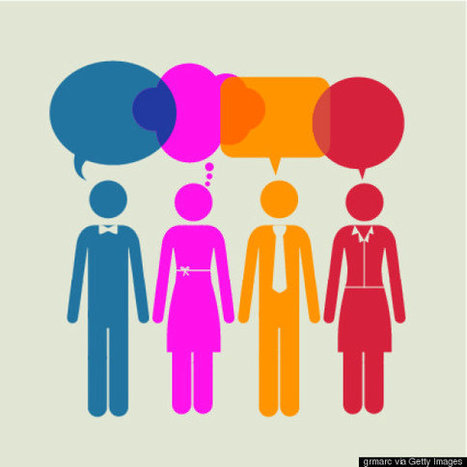



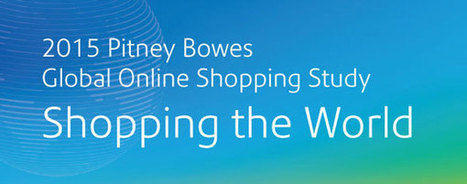







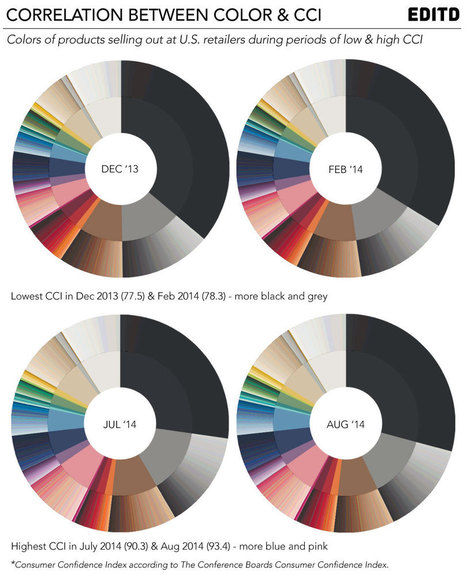
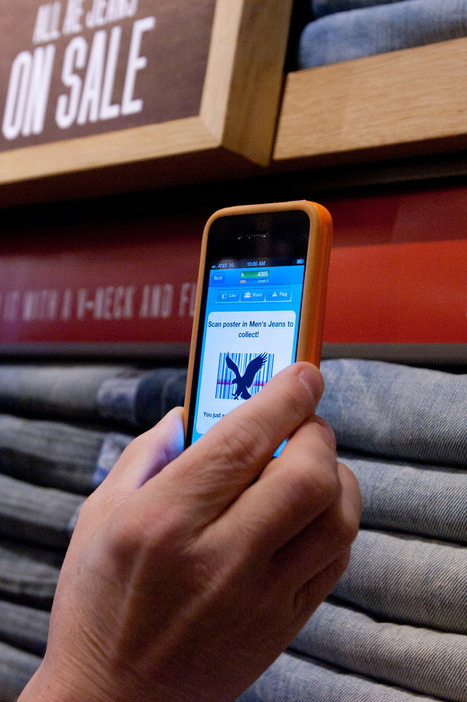

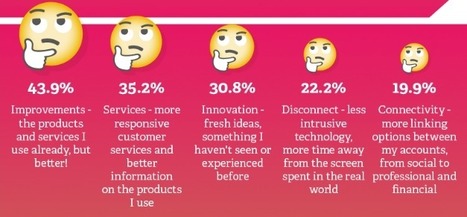

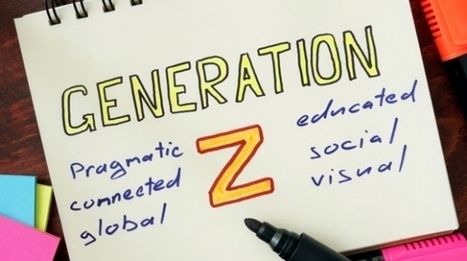

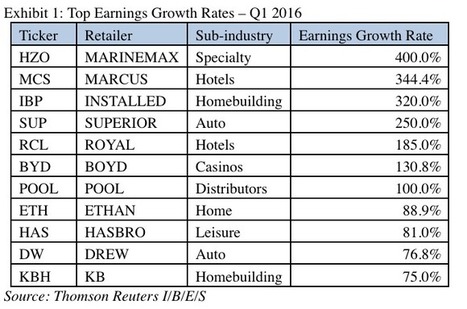

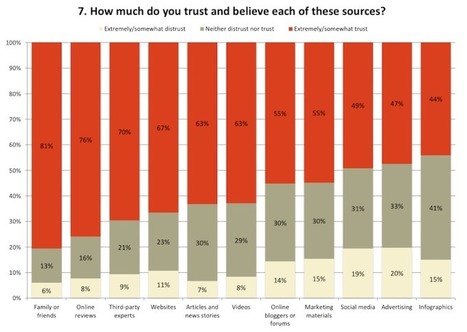














Tom Fishburne looks at the perils of extreme market research confirmation bias. Fun!